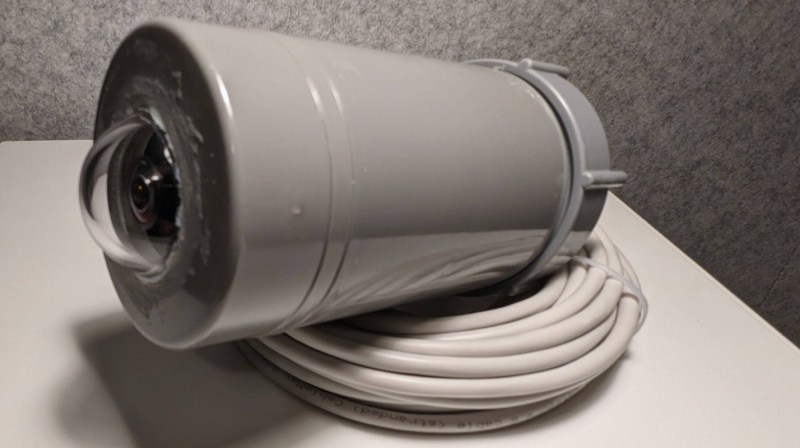The aurora borealis (and its southern equivalent, the aurora australis) is a fleeting and somewhat rare phenomenon that produces vivid curtains of color in the sky at extreme latitudes. It’s a common tourist activity to travel to areas where the aurora is more prevalent in order to catch a glimpse of it. The best opportunities are in the winter though, and since most people don’t want to spend hours outside on a cold night night in high latitudes, an all-sky camera like this one from [Frank] can help notify its users when an aurora is happening.
Because of the extreme temperatures involved, this is a little more involved than simply pointing a camera at the sky and hoping for the best. The enclosure and all electronics need to be able to withstand -50°C and operate at at least -30. For the enclosure, [Frank] is going with PVC tubing with a clear dome glued into a top fits to the end of the pipe, providing a water-resistant enclosure. A Raspberry Pi with a wide-angle lens camera sits on a 3D printed carriage so it can easily slide inside. The electronics use power-over-ethernet (PoE) rather than a battery due to the temperature extremes, which conveniently provides networking capabilities for viewing the images.
This is only part one of this build — in part two [Frank] is planning to build a system which can use this camera assembly to detect the aurora automatically and send out notifications when it sees it. Watching the night sky from the comfort of a warm house or sauna isn’t the only reason for putting an all-sky camera to use, either. They can also be used to observe meteors as they fall and then triangulate the position of the meteorites on the ground.
















Nice little project, I’m always on the Aurora hunt. I am looking forward to reading the detection process, I assume it will be an area/colour based detector but maybe there’s a curve ball in there?
I see a fan, but I’m concerned that it won’t be doing much good due to the small air volume inside the tube. It will end up circulating hot air in the summer. Might have some cooling effect in the winter.
As someone who lives where it’s relevant, nice project. As someone without a viable view, useless to me. :(
I’ve sat in a hot tub and looked up and watched the aurora, within the city it’s occasionally visible.
Outside the city it’s much easier to see, but that requires more commitment and planning. I know several local photographers that have some impressive photos, but they spend all night out there. I can’t afford to do that as I’ll pay for the lack of sleep for days. (If I were retired though…)
The best times are when it’s cold. Same for Astrophotography.
Sigh. Wish I could do them from my livingroom.
There are a couple of weather stations around my city that have webcams with very good light sensitivity. I watch these when the likelihood of northern lights is high so to know when it is time to go outside. I might add a colour detection on the images from these cameras in home assistant to notify me when there is something worthwhile checking.